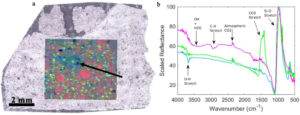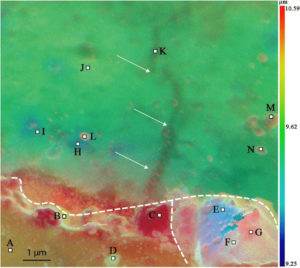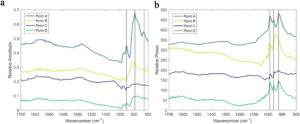FT-IR spectroscopy has traditionally been used to determine the chemical composition of rocks and minerals. Its applications range from the analysis of powder samples to the mapping of larger cross-sectional areas using imaging spectroscopy. Therefore, it is not surprising that the nano-FTIR method is also suitable for geological samples.
Undoubtedly, chondrules are among the most interesting geological specimens. These are stone meteorites containing grains of molten minerals that were formed at the time when our solar system was formed, so they are very important witnesses of our solar system and can tell us what conditions prevailed here at the time of its formation.
In addition to the precise determination of the inorganic components of chondrules, nano-FTIR is also a useful tool for their organic components. Such findings are essential, among other things, for research of theories about the origin of life on Earth.



